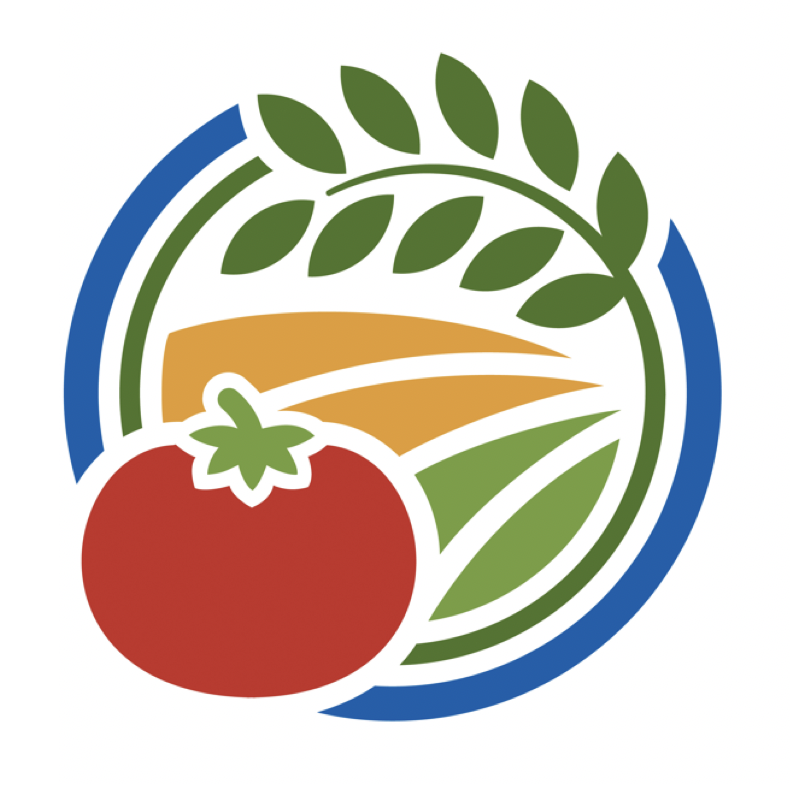Naked Neck chickens forage under olive trees on Silvio Marsan's farm in Central Italy.
It’s a warm spring morning in the vineyard-checkered hills of Central Italy, and Silvio Marsan’s 300-acre farm is already bustling with the sounds of free-range organic chickens and turkeys scratching and pecking under the shade of his olive trees.
Birds enjoy the cover of tall vegetation—so farmers who use an agroforestry system, mixing trees and shrubs with other crops, can provide comfortable cover for free-range poultry and benefit from a consistent supply of rich manure to fertilize their crops.
Pastured birds are often sold at a premium
Chickens foraging in home vineyard and orchard of Località il Piano farm.
Marsan has found mixing birds and perennials to be a good combination on his farm: he runs a thriving poultry processing business alongside his olive oil business. About 75% of his farm income comes from chicken production. About 12,000 day-old chicks are brought to his farm each week; they’ll spend their first two months of life protected inside before they’re coaxed outside during the day to roam freely around the orchards. Marsan finds that his chickens are healthier than conventionally raised ones: they get fewer respiratory infections and he believes they respond better to medications.
Even smaller farms are combining perennials with pastured birds. Antonio Bachatoni is experimenting with chickens on his seven-acre olive and wild asparagus orchard. Luigi Emiliani raises several hundred free-range chickens at a density of about 100 birds an acre on a few acres of mixed timber trees being transitioned to a fruit orchard. He also raises geese for meat in a small neighboring vineyard. Emiliani reports that his grapevines “seem happy” with the geese underneath. His vines are trellised relatively high, about 6 feet off the ground, and this helps to protect them from being nibbled on by the geese. Young vines require protectors to prevent geese from eating the bark, but this is not a problem once the stems become larger.
Pasture-raised poultry is an emerging market that isn’t without its challenges. Of the three farms, Marsan’s is the most intensive in terms of scale. He raises over 100,000 birds at a time, at a stocking density over 250 birds per acre. Free range chickens typically take twice the time (100 days) to reach slaughter weight, compared to conventional chickens raised indoors (55 days). Marsan reports that they end up consuming 3.3 kg of feed (approximately 7 lbs) per kg of body weight over their lifetimes, while conventional chickens consume approximately 2 kg (4 ½ lbs) or less. (He feeds a mixture of maize, triticale, broadbeans, and soybeans.) Factoring in this additional time and feed, Marsan estimates that the cost of raising chickens in this way is approximately four times higher than for conventional chickens. But he can also sell them at an almost four-fold premium (some are sold as organic), to his 300 retail customers distributed throughout Italy.
Luigi Emiliani (right) and visiting researchers with geese and guard dog in vineyard.
Emiliani hasn’t gotten much of a premium in local markets, so he is also looking for national-scale customers. He is considering installing live webcams on his farm and setting up a direct-to-consumer website, where he hopes to get a two-fold premium over conventional supermarket chicken.
Free-range birds also need protection from predators, which Marsan and Emiliani accomplish quite effectively with large, good-natured Maremma or Maremmano sheepdogs—indigenous to central Italy—which are trained not to disturb the birds. Bachetoni uses barbed wire on top of his fencing to keep out weasels, dogs, and other predators.
Birds help the crops
Both Marsan and Emiliani make good use of the ample piles of manure produced by the chickens in their nighttime chicken houses. Emiliani applies the manure to olive and fruit orchards that he owns uphill from the chicken farm. Marsan sends his poultry’s manure, along with offal from his slaughter facility and whey from a nearby cheese making facility, to his on-farm biogas digester.
Marsan’s digester produces more than enough electricity for his farm and he even sells the excess to the grid, saving him 6,000–7,000 euros a month and earning him roughly the same from the sale of electricity, which will help him quickly pay back the 500,000 euro up-front cost to build his digester facility. Marsan also uses the remaining “digestate” byproducts as a fertilizer for his orchards.
On Marsan’s high-density farm, the birds provide some pest control too. He finds that he only needs to mow the orchard floor once or twice a year. And since the chickens eat beetles and fallen olives on the ground, they keep fruit fly and beetle populations down.
Three farms, three ways to run a multi-species agroforestry practiceAll three farms benefit from their tree and vine canopies, which provide shade to the poultry, space for the poultry to behave naturally, and increase the number of products they can harvest from one piece of land. Farms with a lower stocking density of poultry, like Bachetoni’s, reap the benefits of shade and space for the poultry and a more diversified product line, but will still need to perform most standard orchard management practices (like mowing frequently). Farms that stock birds at higher densities, like Marsan’s, get the added benefit of vegetation management and some orchard pest control. But since they also rely more heavily on poultry as a major source of income, they must also invest more heavily in managing it, with weekly purchases of new chicks, for example. And to ensure processing and marketing capacity for the large number of birds harvested weekly, Marsan’s operation has become vertically integrated, with its own processing facility and marketing brand. |
|---|
